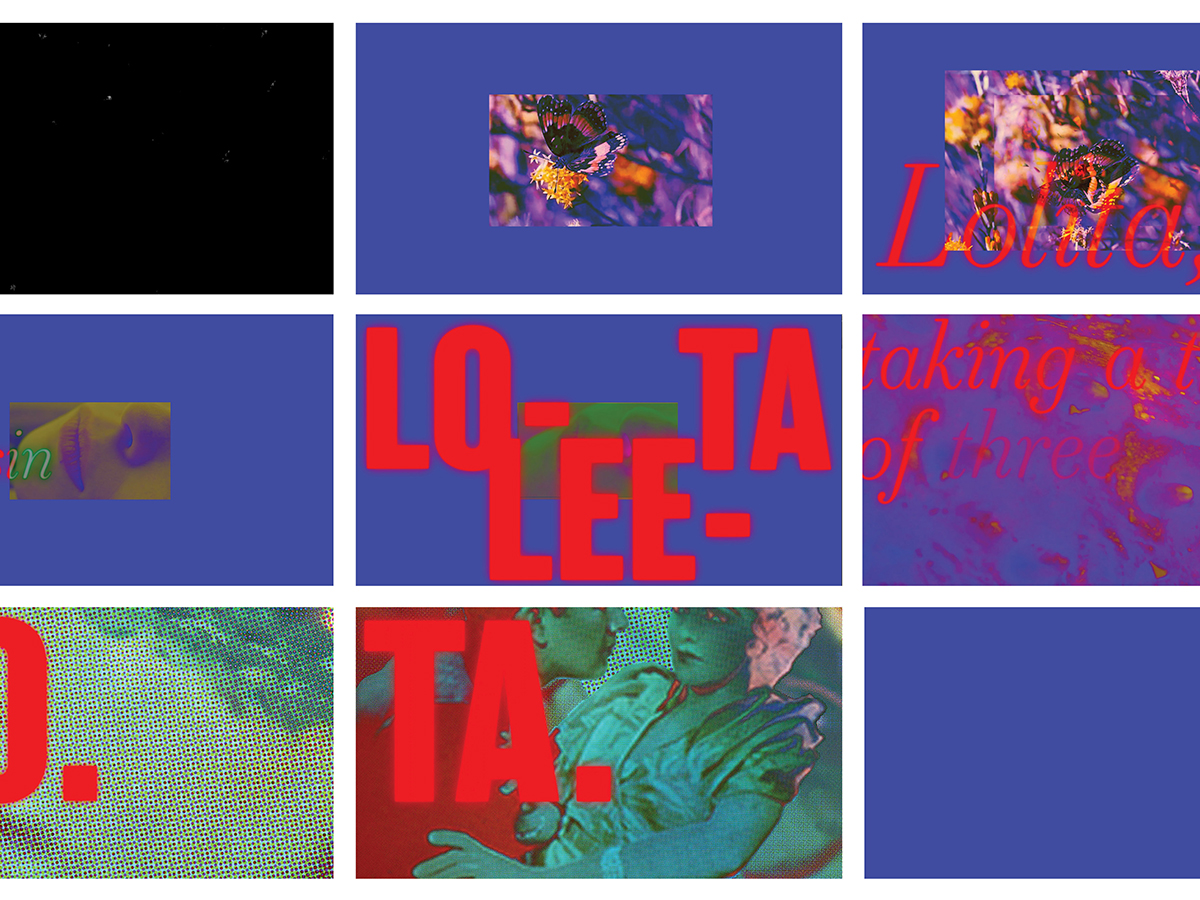Design Teaching Award Runner-Up
Aggie Toppins
Associate Professor, Design
Sam Fox School of Design and Visual Arts
Washington University in St. Louis
Semiotics Studio is a new communication design course in the Sam Fox School at Washington University in St. Louis. Students learn the fundamentals of semiotic theory (the philosophical study of signs and systems of representation) and apply its concepts to studio practice. Students construct pictogrammatic signs for public contexts, shape experimental readings in motion graphics, and create critical interventions through an open design project. Learning outcomes for this class connect the study of form to the political dimensions of designing, specifically how systems of representation bear on social realities. Through exercises, projects, readings, and class discussions, students explore the world of meaning-making including categories of signs, the possibilities of interpretation, and how signs work to normalize cultural practices and perceptions of truth.
There are three studio projects in this course. At the beginning of the semester, projects come with multiple constraints but these gradually loosen so that by the end of the semester, students determine the scope of their own project. The first project is a pictogram assignment in which students learn to systemically construct signs on a formal level while applying basic semiotic concepts from Saussure, Peirce, and Barthes including models of signification, sign modes (icon, index, symbol), and the principles of denotation and connotation. Next is a motion graphics project in which students explore Barthes’ idea of “double articulation,” his twin concepts of anchorage and relay, as well as his critique of authorship. The latter is connected to Michael Rock’s writings on graphic authorship. The third and last project introduces students to poststructuralism including the relationship of signs to theories of power from Foucault, Deleuze & Guattari, and Baudrillard. Students are asked to choose an artifact or system of design, mind-map the semiotic domain that surrounds this artifact or system, and then design a critical intervention through a project of their own choosing.
In addition to these studio projects, students read challenging texts and write five reading responses. The texts are a combination of primary philosophical works, secondary texts, podcasts, and design criticism. Readings are applicable to studio projects and intended to exercise the student’s capacity for critical thinking.
My teaching methods are informed by emancipatory pedagogy, such as those espoused by Paolo Freire and bell hooks. I offer my students learning goals but my assignments do not have preconceived “right” or “wrong” answers. Assignments present students with opportunities to center their experiences and connect their personal interests to the field of communication design. Class time is spent on skill-building workshops, discussions in which students and teachers bring relevant examples (no lecturing to docile listeners), opportunities to workshop research, various forms of critique, and open work sessions.
Although we are in a classroom and we are reading texts and making speculative projects, I teach from the perspective that design has import. Together, we are co-investigating problems in the world (which is to say, many worlds). Semiotics is a theoretical trajectory that begins in Europe and the United States. I contextualize this in the classroom while relating the ideas to design in global contexts. We problematize Western thought by including critical perspectives on colonialism, modernism, and capitalism. My goal is to help students adopt design as a language for critical thinking so that they are equipped not just to take a position in the field, but to potentially transform it.
The Sam Fox School provides students with a robust form-based education. I developed this elective course to address the lack of curricular opportunities for students to engage critical and social theories in design. Additionally, I successfully applied to Wash U’s Gephardt Center to support an embedded librarian, Jenny Akins, to be present in our classroom community. My collaboration with Jenny allowed for the integration of information literacy learning outcomes simultaneously with semiotics and design. Every studio project was informed by a research phase. Having an embedded librarian created a mechanism for supporting students in adopting strong research habits in and out of the classroom.
Students responded well to the course and my teaching evaluations were entirely positive. In the final reviews, one student commented that they appreciated the community we built together and felt they had a lot of room to explore. Another student commented, “I understand what I’m doing now when I make design decisions.” In reflecting on the course, I was pleased with the diversity of responses to project prompts as well as the quality of the students’ work. Considering the challenges of remote learning and the mental and physical toll of the COVID-19 pandemic on our students, I was impressed by and grateful for the high level of energy that my students brought all semester. I look forward to teaching this class in the future and evolving the curriculum over time.
Aggie Toppins is an Associate Professor and Chair of Design at the Sam Fox School of Design and Visual Arts at Washington University in St. Louis. Before joining the faculty at Wash U, Aggie taught for eight years at the University of Tennessee at Chattanooga where she served for two years as the first female Department Head in Art. Aggie works at the intersections of studio practice and critical writing to explore the ways that visual communication bears on social realities. She is interested in the appraisal of history, the negotiability of meaning-making, and in using these critical orientations to decouple design from universalist narratives of capital. Her recent writing has been published by AIGA Eye on Design, Slanted, and in Briar Levit’s forthcoming book Baseline Shift: Untold Stories of Women in Graphic Design History (Princeton Architectural Press).
